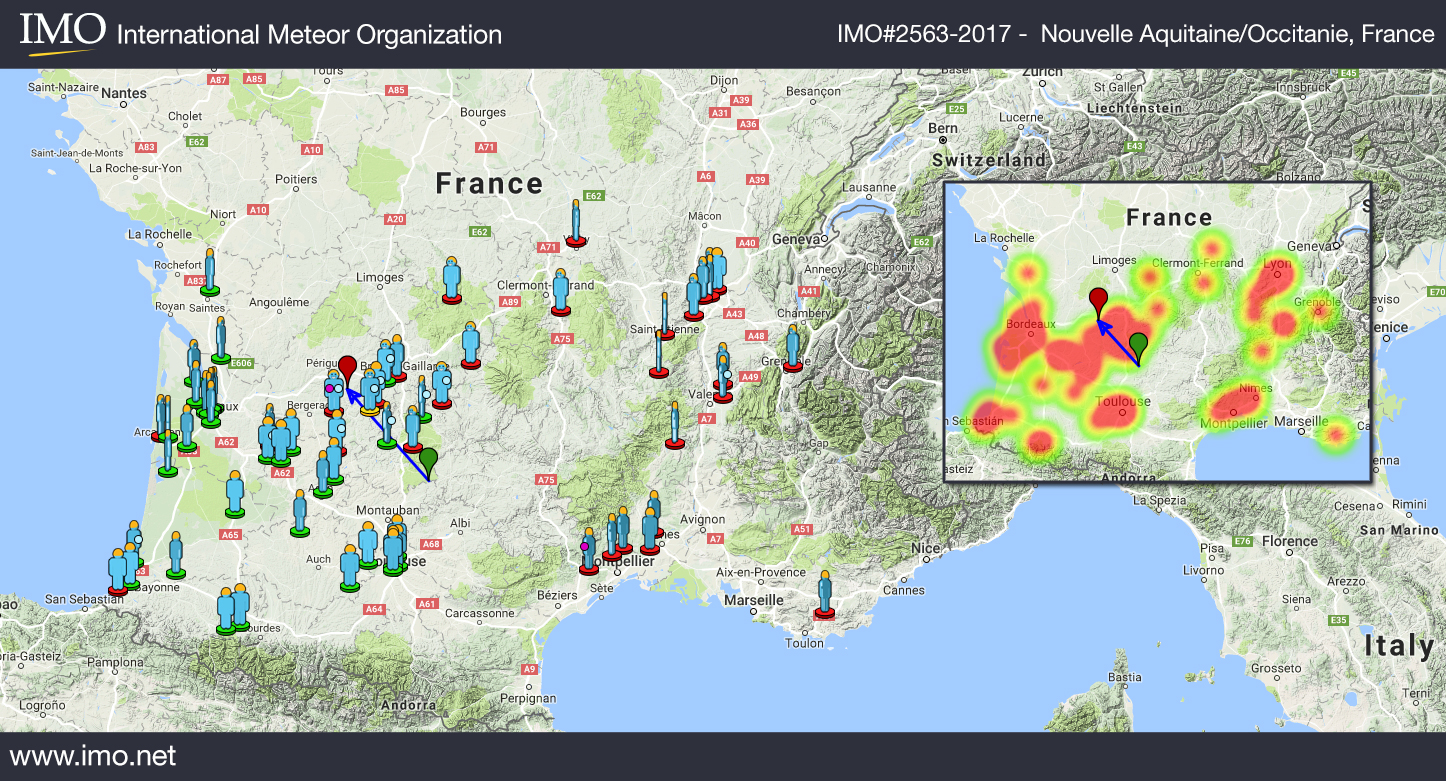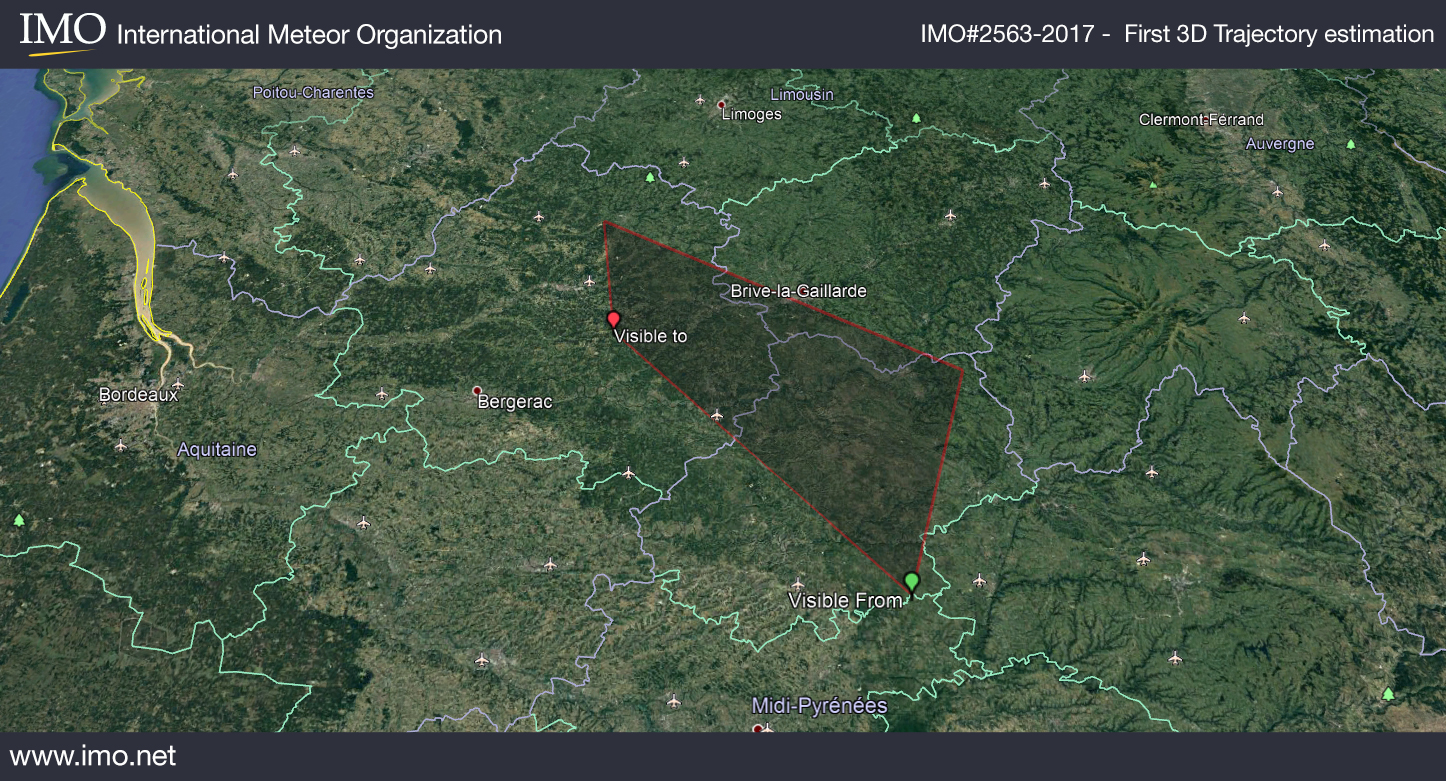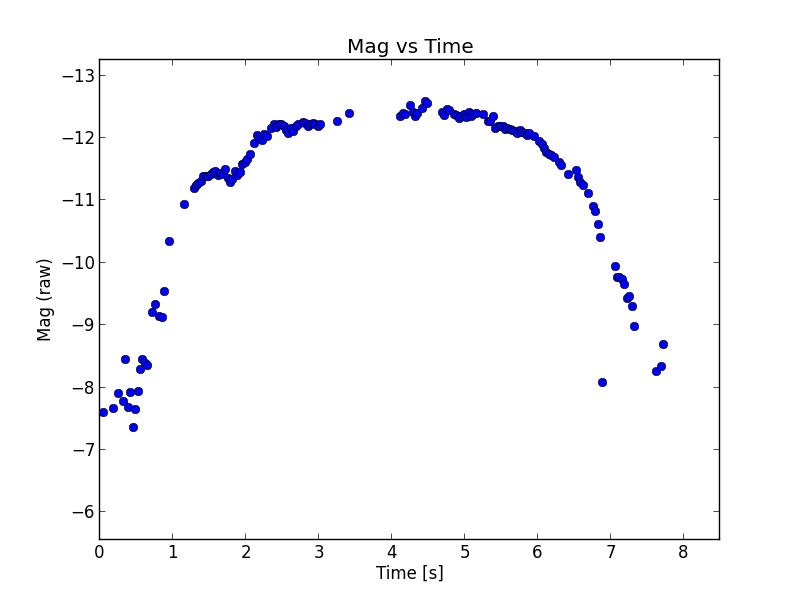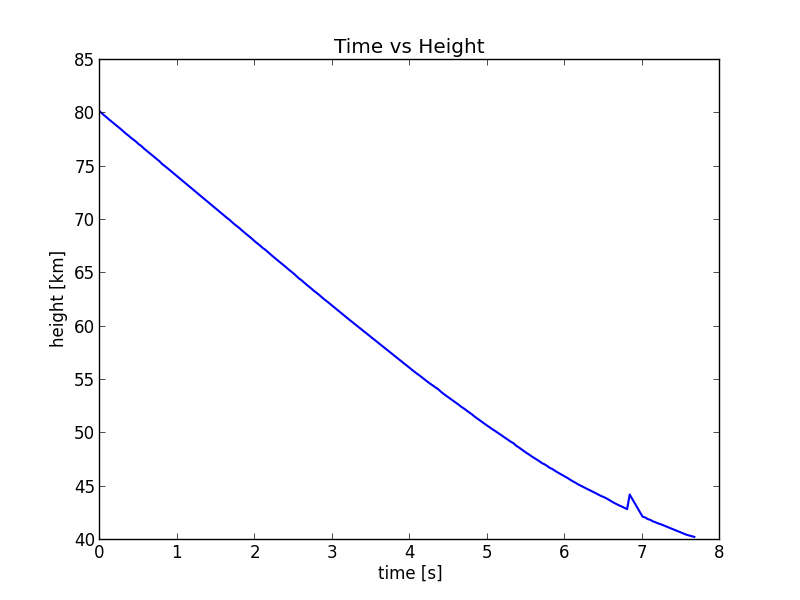
More than 60 reports
The International Meteor Organization have received 65 reports so far about of a fireball event seen above Southern France on August, 4th 2017 around 23:10 French Time (21:10 UT). The fireball was seen primarily from Southern France – witnesses from Biarritz to Montpellier and even from Lyon reported the event. The majority of the reports have been submitted through the REFORME (FR) version of the AMS/IMO online fireball form.
Submit an Official Fireball Report
If you have photo and/or video of the event, please use the AMS version of the form (English only).
Envoyer un rapport d’observation
Si vous avez une photo ou une video de cet évènement utilisez cette version du formulaire (en anglais uniquement).
Estimated Trajectory
The map on top of this article shows the witnesses location with the first estimated trajectory. The preliminary estimated trajectory plotted from the witness reports shows the meteor was traveling from the Southeast to Northwest and ended its visible flight near La Douze (Dordogne – south east of Périgueux).
Below is the first 3D trajectory estimation of the event (available in KML format from the American Meteor Society page of the event). This trajectory still need to be redefined.

UPDATE (06/08/2017)
There are currently more than 170 reports that have been submitted to the IMO/AMS, and a lot of them are still being submitted. In the meantime the team in charge of FRIPON network published their results by taking into account detections of the fireballs on 10 of their stations. The trajectory deduced from these analysis is much more accurate than the ones deduced from the visual reports. According to calculations, the meteoroid entered the Earth atmosphere with a speed of 16.8 km/s and a 20° inclination relative to the horizontal. The meteor started its bright path at the border between the two departments of Tarn and Tarn-et-Garonne, between Bruniquel and Septfonds villages (lat. ~ 44° 06′ N ; lon. ~ 001° 39′ E). The meteor itself remained visible for approximately 7 seconds, while it crossed around 120 km of atmosphere, with a North-North-West direction (Azimuth ~ 335°), before starting its dark flight at a 37 km altitude and at a 7.8 km/s speed, above the Vézère river, near Peyzac-le-Moustier village (lat. ~ 44° 59′ N ; lon. ~ 001° 04′ E). According to all those parameters, meteorite recovery seems very unlikely.

Orbital elements of the meteoroid are the following:
Time (MJD) = 57970.6878125
Perihelion distance, q = 0.82832832682 AU*
Semimajor axis, a = 1.87360561305 AU
Eccentricity, e = 0.557896111621
Inclination, i = 4.30274091339°
Longitude of the ascending node = 312.440141826°
Argument of perihelion = 60.7900369827°
True anomaly = 343.799618006°
* AU = Astronomical Unit






 You saw something bright and fast? Like a huge shooting star? Report it: it may be a fireball.
You saw something bright and fast? Like a huge shooting star? Report it: it may be a fireball.  You counted meteors last night? Share your results with us!
You counted meteors last night? Share your results with us!  You took a photo of a meteor or fireball? You have a screenshot of your cam? Share it with us!
You took a photo of a meteor or fireball? You have a screenshot of your cam? Share it with us!  You caught a meteor or fireball on video? Share your video with us!
You caught a meteor or fireball on video? Share your video with us!
10 comments
Bonjour
Observé le phénomène en sortant du cinéma hier soir à Vichy
Hello
just to inform you of two mistakes in the article.
Bruniquel and Septfonds villages (lat. ~ 44° 06′ N ; lon. ~ 001° 39′ W) => longitude is 001°39’E (not W)
Peyzac-le-Moustier village (lat. ~ 44° 59′ N ; lon. ~ 001° 04′ W) => longitude is 001°04’E (not W)
Bonjour,
Juste merveilleux spectacle Vendredi soir pendant un concert à Agonac près de Périgueux.
Magnifique moment.
j étais à fumel vendredi 4 aout à 23h10..je suis sorti regarder la lune et les étoiles..la lune était presque pleine…j ai pensé à ET…le vélo devant la lune et j ai vu cette boule arriver,j ai cru qu elle était basse..elle s est disloquée en 3 boules en flamme..et elles disparurent dans la nuit…ce fut magique
10/12/17 Thurs night/Fri morning, I saw this around 2 or 3a EST Pittsburgh, PA. The sky was totally dark and cloudy, no stars or moon b/c of cloud coverage. It looked like a vibrant green cluster that appeared, then disappeared (like a bunch of people didn’t turn their flash lights on or off at the same time, but close). No trails that I could see. Just green lights coming on shutting off, 2x. Almost in the same place in the atmosphere. It was the only light that came through the clouds, or I suppose possibly from below, but there were no light sources. They just appeared for a few seconds as a cluster, then “shut off,” not simultaneously, but close. Kind of like the end of a fire cracker. Very defined vibrant green circles, not geometric. Thinking some kind of meteor cluster that burned up maybe? I’ve been googling it for WAY too long. Time to talk to humans…
Je viens de voir une boule lumineuse verte avec une grande traînée assez basse magnifique.
A flash of light that flew horizontally and vanished in a second was seen over Bristol, UK…Bs34.
It appeared low in the sky and lasted only momentarily, it was very bright but was gone as quickly as I’d seen it!